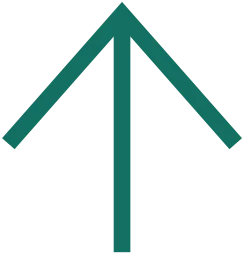- IUCN StatusLeast Concern
- PopulationThe exact population numbers are unknown, but they are likely to be very high.
- DietOmnivore - fruit, plants, small mammals, fish & insects
- GroupA nursery (a group of mothers with their young), a gaze or a mask
- SizeUp to 70cm long, tail length an extra 20-40cm
- ContinentNorth and South America (native), however, they have become invasive in Europe and Asia
- Lifespan2-3 years in the wild but can live much longer in captivity – the oldest raccoon was recorded to live for 21 years.
- Weightup to 26 kg
- HabitatDeciduous forest, mountain, coastal and urban environments
- Scientific NameProcyon lotor
Meet the Raccoon

Raccoons are one of the most recognisable animals in North America. It has a pointed snout, a wide skull, rounded ears, sharp teeth, a big hunched back (as a result of the hind legs being bigger than the front legs), and a bushy tail with four to 10 black rings. The most distinctive characteristics are the black markings around the eyes that resemble a mask (though not every raccoon has this).
Known for their intelligence and good memory, raccoons are able to solve puzzles. They don't have opposable thumbs, but that doesn't stop them using their paws and powerful claws to open things, which is where their mischievous reputation comes from.
Common foods include fruits, plants, nuts, berries, insects, rodents, frogs, eggs, and crayfish. In urban environments, the animal often sifts through garbage for food.

Introducing....
our inquisitive raccoons at Wolds Wildlife Park
Did you know?
Read on to find out more about these mischievous characters.
Does the raccoons bandit face mask help with glare?
It is believed that the black contrasts with the white fur around the rest of a raccoons face, helps them see clearly. This is similar to how some athletes wear black stickers under their eyes to absorb light and reduce glare that could obstruct vision.
Although that’s just one theory, another is that the subtle differences help them identify each other.
One thing is for sure, their famous face mask play's to their reputation for mischief!
Are wild raccoons toilet trained?
Yes!
They don’t just poo anywhere, raccoons carefully pick their toilet sites and stick with a few of them.
Unfortunately, often these toilets are the roofs, decks and unsealed attics of local human populations.
How did raccoons get their name?
Both the Quebeqi and the Spanish-speaking colonists who named raccoons independently referred to the hands of the animal. The word roughly translates to “the one that scratches with his hands”, and mapachtli in Spanish refers to “the animal with the hands”.
This is because the hands of a raccoon are distinctly human-like with 5 fingers.
Why is it thought that raccoons wash their food before eating it?
Raccoon’s scientific name, “Procyon lotor,” means “before dog-washer.” They got that name because they always appear to wash their food in water before relishing it. These animals have other names in different languages to reflect this washing behavior.
For example, Germans refer to them as waschbär (wash-bear); in Italian, they’re called orsetto lavatore (little washing bear). Meanwhile, the name “raccoon” originates from “aroughcun,” a Powhatan word that means “one that scratches with its hands.”
Surprisingly, it’s not true that raccoons wash their food before eating. What people mistake for washing is the animal dousing its hands to increase its sensitivity to touch. This allows them to feel, explore, and memorise their food properly to identify it quickly next time.
Do raccoons climb?
Raccoons are very agile and nimble animals that love to climb trees. They may even climb as high as 12 metres, and falling from such elevated heights doesn’t bother them.
What makes them such excellent climbers? Their front paws, strong hind legs, long tails, and flexible ankles. These features help them grab on to trees and maintain balance as they climb.
Raccoons are also excellent at climbing houses, barns and have also been seen climbing up the side of high rise office buildings!!







